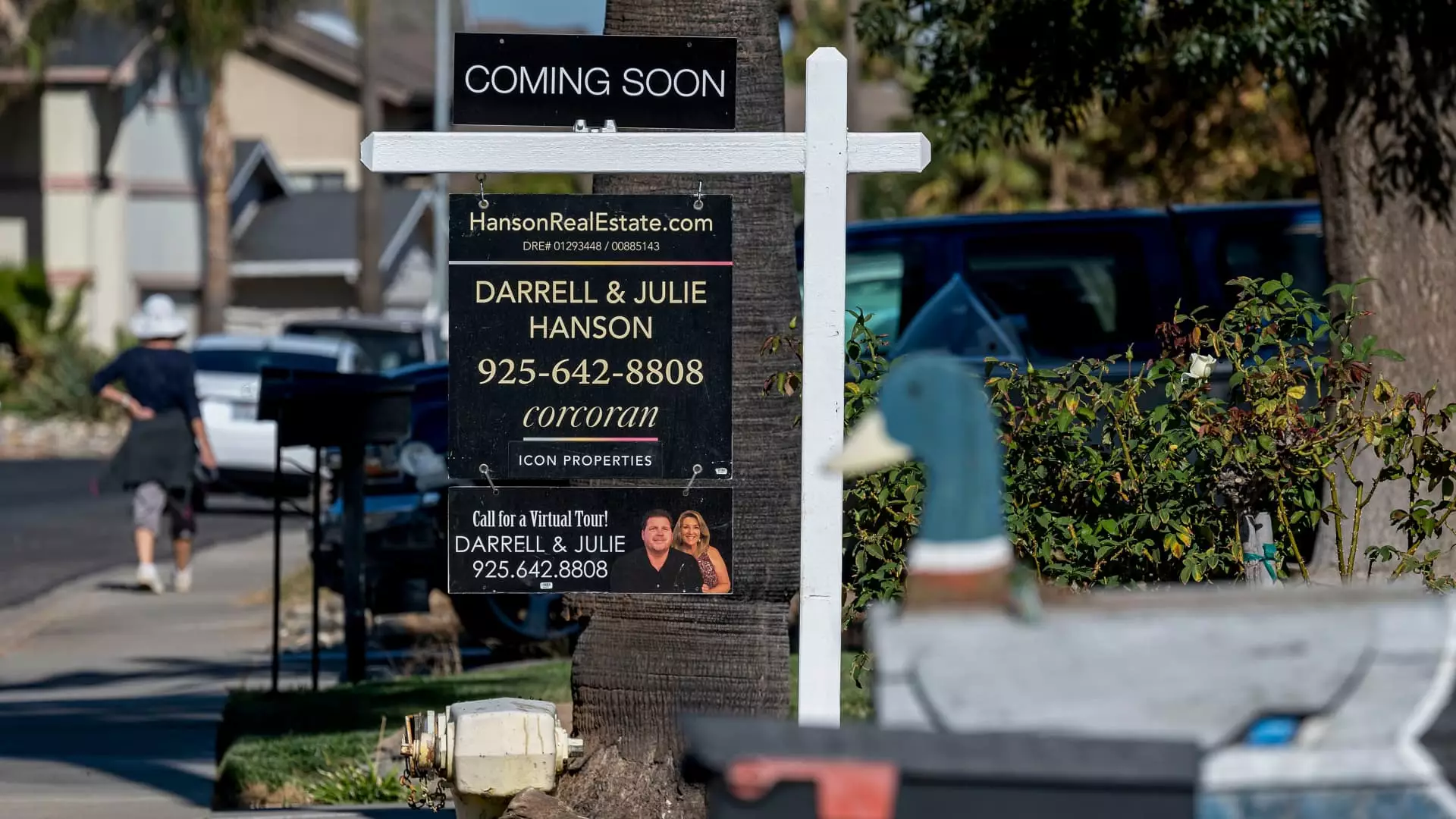In recent weeks, mortgage rates have been on an upward trajectory, a phenomenon largely influenced by broader economic uncertainties linked to political events. The fluctuations are particularly notable as the market broke a stagnant period, revealing a slight overall increase in mortgage applications after several weeks of decline. For instance, total application volume saw a minimal rise of 0.5%, signaling a cautious rebound. Despite this uptick representing the first increase in seven weeks, it reflects the prevailing hesitation among both investors and potential homebuyers, who are navigating a complex landscape.
The average interest rate for 30-year fixed-rate mortgages climbed to 6.86%, a modest rise from 6.81%. This increase came accompanied by a decrease in points, which could suggest that while rates are edging higher, the cost of borrowing is somewhat stabilizing. Experts, including Joel Kan from the Mortgage Bankers Association, underscore that this surge is primarily driven by rising Treasury yields amidst the unfolding implications of a new presidential administration. The anticipated 25-basis-point rate cut from the Federal Reserve had little to no significant effect on market movement, illustrating how external economic factors weigh heavily on investor sentiment.
Delving deeper into the numbers, refinancing applications experienced a notable decline of 2%, marking the lowest point since May. It’s interesting to note, however, that this figure remains 43% higher than the same period a year ago, when rates were significantly elevated. The drop suggests that many potential refinancers are currently deterred by rising rates, choosing to hold off rather than secure loans at less favorable terms. Conversely, home purchase applications did show some resilience, gaining 2% week-over-week and slightly outperforming last year’s figures. This duality indicates an evolving mindset among homebuyers who are balancing the lure of lower rates against the backdrop of rising home prices and limited inventory.
Interestingly, the path forward for those seeking financing seems bolstered by government-backed options. Applications for loans supported by the Federal Housing Administration and the U.S. Department of Veterans Affairs displayed commendable growth, with increases of 3% and 9%, respectively. The performance of FHA loans, which saw a dip in rates compared to conventional mortgages, may provide relief to borrowers who are increasingly disadvantaged by higher market rates.
As the market continues to assess the implications of election-related changes in fiscal policy, it remains in a state of flux. Matthew Graham from Mortgage News Daily characterized the market’s current phase as one of “election-related volatility,” indicating that investors are grappling with numerous variables. This complexity reflects a broader uncertainty regarding future financial conditions, and for potential borrowers, it underscores the importance of staying informed about market trends.
While the mortgage landscape reveals a tentative recovery in application volumes, borrowers must navigate not only rising rates but also economic policies and housing supply challenges. The next few weeks will be crucial in determining whether this trend will continue to stabilize or face further fluctuations.

